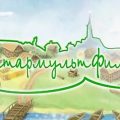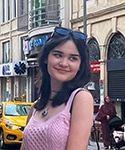For language learners, classic cartoons offer an engaging and accessible way to absorb vocabulary, pronunciation, and cultural context. When it comes to Russian, few resources are as rich and entertaining as the animated films produced by Soyuzmultfilm, which was the Soviet Union’s and is now Russia’s premier animation studio. Founded in 1936, Soyuzmultfilm has to date produced over 1,500 animated works, many of which have remained beloved across generations.
While Soyuzmultfilm is by far the best known, the USSR excelled at animation and had many respected studios. Ekran, for instance, was founded in 1968 and produced many classics in Moscow. There were also artists outside the Russian SSR such as at Kyivnaukfilm, founded in 1941 and based in Kyiv. Kyivnaukfilm often made cartoons based on Ukrainian culture and sometimes released cartoons in Ukrainian as well as Russian.
One reason the Soviets supported animation is because they regarded it as an educational and propaganda tool that could reach children. Soviet cartoons often convey moral lessons, socialist ideals, and folk traditions. Soviet animators drew inspiration from world literature and from the rich folklore of the many cultures within the USSR. At the same time, animators often found ways to express complex emotions and even to insert dissident messages into their creations.
For learners of Russian, these cartoons provide more than nostalgia—they serve as a window into the language, humor, and cultural values of the Soviet period. This resource focuses mainly on shorter cartoons that run 10-20 minutes or less.
Волк и семеро козлят (1957)
The Wolf and the Seven Little Goats
Review by Lucine Poturyan
The Wolf and Seven Little Goats (Волк и семеро козлят) is a children’s cartoon released in the Soviet Union in 1957. The ten-minute family short centers around a mother goat and her seven kids. To keep them safe, she has taught them a song she sings when she comes home so that they know that its her and only then open the door for her.
A wolf – the classic villain of children’s woodland stories – who is on a mission to obtain his supper, observes this phenomenon and attempts to break into the goats’ home. The wolf’s first attempt is unsuccessful because his deep and gravely voice is nothing like the mothers. So, he enlists the assistance of the forest’s local blacksmith (who are often given extraordinary powers in Russian folktales) to alter the tone of the wolf’s voice to match the mother’s. When the wolf sings the mother’s song in a higher pitch and fools the baby goats, he captures them in a sack and takes them away.
In a symbolic unification of the community, the forest animals who witnessed the capture of the baby goats come together, along with the mother goat, to free the children from the clutches of the intruding wolf. By freeing the goats from the sack and replacing them with bricks, they dupe the wolf and save the children. The wolf escapes from the vengeful forest animals with his sack of bricks and falls into the river, his plans thwarted. The cartoon ends with a traditional Russian dance as the baby goats rejoice with their mother and the bear who helped them. Peace has been restored.
Волк и семеро козлят depicts Soviet family and community values, emphasizing the group above the individual. The forest community immediately offers help to the mother goat and the whole community comes together to vanquish the enemy who threatens to divide the family. Furthermore, given the fact that the cartoon was produced during the Cold War, one cannot help but notice motifs associated with the US and the Soviet Union. The wolf’s greed in kidnapping the children for his personal benefit can be interpreted as a representation of the selfish capitalism that was criticized in the Soviet Union. The wolf’s actions could also represent American interference in the East, as the wolf barges in to someone else’s home to sieze what he wants, which is how the Soviets portrayed America’s Cold War push eastwards with military bases and containment policy alliances. On the other hand, the mother goat and forest community’s desire to protect their own might be taken to represent the Soviet republics and their unity in ridding their world of an intruder. They are able to do this thanks to the Communist values of community and equality among different races (or, in this case, different species) that was officially promoted by the Soviet Union. Finally, the forest community’s triumph over the thief in the cartoon symbolizes the Soviet hope for victory in the never-ending Cold War conflict.
The classic Brothers Grimm fairytale was thus adapted by Soviet producers in a cartoon that has proven successful to generations of Russians.
The cartoon has received many positive comments on Youtube, with people praising it as “the golden story of our childhood” and “overall, a classic Russian cartoon,” among many other similar comments. Even outside of any geopolitical messaging, I think that the cartoon is educational for young children, as it teaches them the value of facing one’s fears and the importance of forging strong bonds with one’s family and community. A contemporary U.S. audience may find the cartoon to be old-fashioned in its lack of dialogue, and in its lack of interactiveness with the young audience for whom it was created.
Волк и семеро козлят was produced by the Soyuzmultfilm animation studio under the direction of Pyotor Nosov. The production included work from various voice actors, including Julia Yulskaya playing the mother and all the baby goats, Vladimir Volodin as the wolf, and Leonid Pirogov as the bear.
Спокойной ночи, малыши! (1964-Today)
Good Night, Little Ones!
Review by Julie Hersh
Good Night, Little Ones! (Спокойной ночи, малыши!) is a Russian cartoon that’s been on the air ever since 1964. Its website claims that it is the longest-running cartoon of all time, and three generations of Russians have grown up on it. It’s aimed at very young children and airs at what is supposed to be just before their bedtime.
The show is part-educational, part-entertainment. It is introduced by puppets and one human host. The pupets include the piglet Khryusha (Хрюша, named after the sound pigs make in Russian), dog Filya (Филя), rabbit Stepashka (Степашка), and bear cub Mishutka (Мишутка). The main lead is “the Grown-Up Person” (Взрослый человек), a human that explains things to the puppets. Other characters have come and gone over the years, including in 2014 the tiger Mura (Мура), inspired by Russian President Vladimir Putin’s campaign to save the Amur (Siberian) tiger. Burattino (the name that Russians know the character Pinocchio by) also appeared for some time, as have characters from Russian fairy tales, such as Kolobok (Колобок), a round loaf of bread that can speak.
Спокойной ночи, малыши! was highly popular throughout the Soviet era, and many big names from the Russian theater world took part. After Brezhnev’s death, though, the show encountered some major political repression—most of the puppets were called into suspicion and banned from the air. They were brought back under Gorbachev’s glasnost liberalization. The show nearly ended after the fall of the Soviet Union, but a letter-writing campaign on the part of viewers managed to save it.
The basic format has not altered much over the years. It begins with opening credits, including a song, that has changed only a few times over its long history. The narrator and the dolls give some explanation about some moral situation. Then, a cartoon is shown to illustrate the lesson. In recent years, Smeshariki and Masha and the Bear have been among the featured cartoons. They are both seperate series as well. At the end, the characters and narrator all say good night to the children watching. The show’s visual effects have, of course, changed over the past 50 years, but its heart remains the same.
More information can be found (in Russian) on the show’s website.
Бременские музыканты (1969)
The Bremen Town Musicians
Review by Nafisa Nigmatova
The Bremen Town Musicians (Бременские музыканты) is an Soviet animated rock opera released in the USSR. It has since become popular among all generations, first in the Soviet Union and later gained reputation internationally. Although the USSR usually made a show of rejecting western styles, one of this film’s main draws was its unforgettable soundtrack and style, which drew from the latest global music and clothing fashions of the late 1960s. The film premiered in 1969 in the USSR, then had official premieres in Finland, Poland, and Brazil. The entire film is sung – with song carrying all the action and story development.
In the modern day, it is often performed as a stage play aimed at children in Russia. There are many statues to the characters scattered around Russia. In 2023, it was remade into a full length live-action feature film.
Read a full history of this cartoon on our site.
Винни Пух (1969-72)
Winnie-the-Pooh
Review by Julie Hersh
Winnie-the-Pooh (Винни Пух) is a Soviet animated series based on the American classic of the same name. The Soviet version, however, has significant differences from the unusual animation to the sometimes dark subject matter and Pooh’s exceptional air of melancholy. Technically, it was made for children, but adults tend to like it just as much, if not more.
The series consists of three short films, produced in 1969, 1971, and 1972 by Soyuzmultfilm, the Soviet animation studio. The three films are Winnie-the-Pooh, Winnie-the-Pooh Goes Visiting (Винни-Пух идёт в гости), and Winnie-the-Pooh and the Busy Day (Винни-Пух и день забот). The episodes follow Pooh and his various animal friends, Piglet (Пятачок, which translates directly as either “pig’s snout” or “five-kopeck coin”), Owl (Сова), Rabbit (Кролик), and Eeyore (Иа), on his small adventures such as finding honey and disturbing bees, visiting friends, and celebrating birthdays. The characters also sometimes sing catchy, dreamy songs.
Pooh was created by some astoundingly talented people. The director, Fyodor Khitruk (Фёдор Хитрук), won many Soviet state awards for his artistic work over his life, and was a lauded film director and screenwriter as well as an animator. Evgeniy Leonov (Евгений Леонов), who voiced Pooh, was a highly acclaimed theater and film actor who starred in several beloved Soviet films, and he was also a People’s Artist of the USSR.
Russians have adopted Pooh as their own, as, consider their version to be independent of the American one. Khitruk apparently did not see the American version of Winnie-the-Pooh before filming his own, which is one reason why its animation style is so different. Further, the Soviet Union never bothered to purchase screen rights to the American book, so Khitruk could not show the film abroad. Винни Пух is a regarded as a Soviet classic.
Ну, погоди! (1969-2006)
Well, Just You Wait!
Review By Julie Hersh
Although it was produced over the course of some 47 years, there are only about 20 episodes of Ну, погоди!, each approximately 10 minutes long. The first 16 episodes are considered the “golden” era—they appeared under the aegis of Soyuzmultfilm (Союзмултфильм), the Soviet cartoon agency. After the death of the actor who voiced the wolf, Anatoliy Papanov (Анатолий Папанов), the series stopped. It has been revived sporadically, however, over the years.
The show is often compared to Tom and Jerry. It features Wolf (Волк) and Hare (Заяц) and all episodes basically center around the wolf’s attempts to capture the hare, and how the hare escapes, sometimes thanks to the hare’s daring and skill and sometimes because of the wolf’s hubris and stupidity. The wolf is depicted as a hooligan, constantly breaking things and committing small acts of destruction (and he’s a smoker!). The hare, in contrast, is a well-behaved role model. There are a few other recurring characters, including a hippopotamus and a bear-policeman. The end of every episode features the wolf yelling, “Nu, pogodi!”
The cartoon is short on speech, but the soundtrack is both popular and highly evocative of Soviet times. The theme music in particular, called “Water Skis” (“Водные лыжи”), is a classic of Soviet TV and music. Many singers and groups who were popular while the show was in active production were also featured on the soundtracks. The first-ever episode actually featured the wolf whistling “Song About a Friend” (“Песня о друге”), by Vladimir Vysotsky—because the show’s creator had wanted Vysotsky to provide the voiceover for the wolf, but the casting was not approved by the authorities. Nevertheless, the show became a surprising star vehicle for Papanov, as his voice became well-known throughout Russian households.
Read an extensive history of the cartoon on our site here.
Чебурашка (1969-2023)
Cheburashka
Review by Julie Hersh
Cheburashka (Чебурашка) is one of the great classics of Soviet culture, well known inside the former USSR and outside. The cartoons, which basically all Russians and Russian language students know and love, aired between 1969 and 1974.
The original Cheburashka episodes aired between 1969 and 1974. These short films included Crocodile Gena and His Friends (Крокодил Гена и его друзья), Cheburashka (Чебурашка), Shapoklyak (Шапокляк), and Cheburashka Goes to School (Чебурашка идёт в школу). The first three are about 20 minutes; the last is about 10. The films were based on the Crocodile Gena books by Edward Uspenskiy (Эдуард Успенский), a figure who looms large in Russian children’s literature. He is also known for Prostokvashino and, in the modern era, Fixiki. Uspenskiy, along with the cartoon’s director, Roman Kachanov, wrote the Cheburashka screenplays.
The series tell the story of dear friends Crocodile Gena, an accordion-playing crocodile, and Cheburashka, a creature of uncertain species with large ears and a squeaky voice. Many Russians will point out that he looks a little like Mickey Mouse, although if that was the inspiration for him, that has never been established. The two friends meet in the first episode when Gena puts out an ad looking for friends, and are inseparable ever after. Shapoklyak, the third main character, is the show’s antagonist—she is a mean-spirited babushka who the friends eventually win over. The episodes show the characters dealing with various everyday situations from celebrating birthdays, to trying to go on vacation, to (of course), supporting the construction of communism.
Beyond the animation and the characters’ highly recognizable voices, the show is known for its songs. For instance, “Let Them Run Awkwardly” (“Пусть бегут неуклюже“) is a melancoly song about birthdays that has became so popular that it is sometimes sung at Russian birthdays. “Blue Wagon” (“Голубой вагон“) is another deeply beloved favorite that nearly all Russians will recongize and most can sing along with. There have long been several statues in honor of Gena and Cheburashka all over Russia.
More recently, Soyuzmultfilm released a new Cheburashka short film, The Secret of the Holiday (Секрет праздника) in 2021 and released a full-length live action film in 2023. It became Russia’s highest grossing domestically produced film of all time.
Крошка Енот (1974)
Little Raccoon
Review by Lucine Poturyan
Крошка Енот is a cartoon about a baby raccoon overcoming his fears.
The baby raccoon, who lives in the jungle with his mother, is given the task of collecting sedge by the jungle’s pond for dinner on his birthday. The raccoon sets off into the foliage, eager to prove his bravery and maturity to his mother. On the way to the pond, the raccoon meets a monkey playing in the trees. The monkey warns the little raccoon of the fearsome “Тот-Кто-Сидит-В-Пруду” (“He Who Sits in the Pond”).
Undeterred and boldly declaring,“I am afraid of no one,” the baby raccoon continues on his way to the water’s edge.
Upon reaching the pond, the young adventurer searches for the mysterious villain about whom he’s been warned. Searching the grass and the trees, the raccoon protagonist finds He Who Sits in the Pond: a frightening reflection in the water, which the baby raccoon doesn’t realize is his very own.
After running away in fear, the raccoon returns to his monkey friend. The baby raccoon remarks that he saw a “bad raccoon” in the water, and the monkey exclaims about the “evil monkey” he saw earlier. The monkey convinces him to return to the pond with a stick in order to ward off He Who Sits in the Pond, but first the frightened baby raccoon runs back home to his mother.
His mother reassures him, urging him to return to the pond and smile at his foe.
Though hesitant to take his mother’s advice, the baby raccoon does just what she advises. After smiling at his reflection, which had terrified him so deeply, the young raccoon decides that is not a threat and is able to collect the sedge his mother needs. On his way home, he tells the monkey about how he overcame his fear, and they walk away singing about smiling, friendship, and brighter days.
This Russian cartoon’s music gives away the fact that it is an older production; the classical accordion and violin music that sprinkles the storyline is not so common in today’s animations for children. Its music and the visual representation of the characters on the screen is similar to that of a 1950’s Walt Disney production in terms of the instruments used and the flat and hand-drawn qualities of the cartoon. The dark colors used in the animation, the grainy quality of the production, and the way that the characters contrast so starkly with the background add a somberness to the cartoon. Though it is aimed at children, Kroshka Enot possesses an emotional realism that isn’t common in contemporary children’s cartoons. This is manifested in the eerie way that the monkey appears before the racoon, and how he eggs the racoon on to meet the “monster” in the pond. Though the two end up becoming friends, the way the monkey is initially malevolently depicted can strike a modern American viewer as perhaps too scary for kids. However, it also plays into the message about facing one’s fears, as they are often nothing more than illusions or misperceptions.
The cartoon is, on the whole, wholesome and pure. The frightening path that the audience and the young racoon take to reaching the epiphany that smiling at what frightens us can help us to overcome our fears and even make friends makes that message vivid and convincing.
Крошка Енот was produced in 1974 in the Soviet Union by the production company Экран, or “Screen.” Directed by Oleg Churkin and voiced by Klara Rumyanova and Mariya Vinogradova, the children’s cartoon reaffirms the unity found in friendship and camaraderie. The timeless life lessons taught in Kroshka Enot will surely resonate with modern audiences.
Ёжик в тумане (1975)
Hedgehog in the Fog
Review by Julie Hersh
Hedgehog in the Fog (Ёжик в тумане) is a 1975 animated short film. It’s rather dark and philosophical, and not exactly meant for children; but even if you can’t understand every word, it’s beautiful and fascinating enough to be worth a watch. It is also one that is referenced not infrequently in modern Russia and elsewhere in the former USSR to describe a feeling of being lost physically or mentally.
The film was directed by Yuriy Norshtein (Юрий Норштейн), a very well-known animator and director of Soviet animated films. Another of his most famous films, Tale of Tales (Сказка сказок), is perhaps even more depressing and obscure than Hedgehog, though similarly beautiful. Norshtein wrote (with Lyudmila Petrushevskaya, Людмила Петрушевская) and drew that one, in addition to directing it.
The screenplay to Hedgehog, and the short story on which it was based, was written by Sergey Kozlov (Сергей Козлов), a Soviet story writer and poet. The film depicts a hedgehog walking through the fog to meet his friend, a small bear, for their tradition of drinking tea and counting the stars. The hedgehog gets lost in the fog on the way, though, and a brief but life-changing adventure ensues.
The symbolism and meaning of the film has been widely discussed in Russian academic circles, but it’s also possible to watch film simply for… well, not fun, exactly, but maybe for a look into the Russian soul, and a brief reminder that deep art was still possible to produce in the Soviet Union. Indeed, Hedgehog was produced by the state animation agency Soyuzmultfilm, and it was shown at many official film festivals, where it picked up many prizes. Norshtein won, for his overall conributions to Soviet art, the State Prize of the USSR in 1979, and Maria Vinogradova (Мария Виноградова), the highly prolific actress who voiced the hedgehog, was named a People’s Artist of the RSFSR in 1987.
Приключения капитана Врунгеля (1976-79)
The Adventures of Captain Vrungel
Review by Julie Hersh
The Adventures of Captain Vrungel (Приключения капитана Врунгеля) aired between 1976 and 1979 and consists of 13 episodes, each about 10 minutes long. Each episode is a musical that tells of the adventures of the eponymous Captain Vrungel. Much of its story told through song and dance. The series is based on the book of the same name by Andrey Nekrasov (Андрей Некрасов), a Russian/Soviet writer.
In the first series, the main character, Christopher Bonifatevich Vrungel, is introduced. A former sea captain, he gets the opportunity to take part in an international sailing competition: he and the other participants will sail yachts around the world. He and his friend and assistant, Loma, build their yacht, called Victory (Победа), but before they can even start the voyage, an accident turns the ship’s name into Trouble (Беда). The rest of the series tells of Vrungel’s and Loma’s adventures on their journey around the world, and the obstacles they face on their way to victory.
A highly acclaimed team of creatives took part in the series. The main actor, Zinoviy Gerdt (Зиновий Гердт), was an a theater and film actor who was awarded the title People’s Artist of both the RSFSR (Russian Soviet Federative Socialist Republic) and the USSR. Evgen Paperniy (Євген Паперний, in Ukrainian), who voiced Loma, was also a People’s Artist of the Ukrainian SSR and, later, of independent Ukraine.
The cartoon was produced by Kyivnaukfilm (Київнаукфільм), a Soviet animation studio based in Ukraine but primarily operating in Russian.
Простоквашино (1978-2024)
Prostokvashino
Review by Julie Hersh
Prostokvashino (Простоквашино) was originally a series of three short animated films. The episodes are Three from Prostokvashino (Трое из Простоквашино, 1978), Vacations in Prostokvashino (Каникулы в Простоквашино, 1980), and Winter in Prostokvashino (Зима в Простоквашино, 1984). Each is a little less than 20 minutes. They are based on the story “Uncle Fyodor, a Dog, and a Cat” (“Дядя Фёдор, пёс и кот”; note that this word for “dog” is usually used for “mutt” or to describe a homeless dog), by Edward Uspenskiy (Эдуард Успенский), who also wrote the source material for everyone’s favorite Cheburashka and the contemporary cartoon Fixiki.
The series takes place in the village of Prostokvashino and tells the stories of the characters Uncle Fyodor (Дядя Фёдор), who is actually a young boy but an “old soul.” Supporting characters include the once-homeless cat Matroskin (Матроскин), the dog Sharik (Шарик), the postman Pechkin (Печкин), Fyodor’s mom and dad, and a few others. (The village is made-up, though there is actually a real village with the same name in Nizhegorodskiy province; 17 people live there.) In the first cartoon, Fyodor has run away from his parents’ house, and he and the cat Matroskin move to Prostokvashino together. The first episode is about the parents’ efforts to find Fyodor. The other two episodes include Fyodor’s triumphant returns to the village during his school vacations.
The show has plenty of its own merits, in addition to some delightful Communist moral upbringing. In the third episode, for instance, Matroskin and Sharik have a falling-out because Sharik buys tennis shoes (a western style) instead of regular Russian winter boots.
Most recently, the story was developed into an animated TV series that ran from 2018-2024. The memory of the show is maintained by a dairy-products brand named for the show that features the cat on its packaging.
Жил-был пёс (1982)
There Once Was a Dog
Review by Julie Hersh
There Once Was a Dog (Жив-був пес in Ukrainian; Жил-был пёс in Russian) is a Ukrainian/Russian short animated film from the Soviet era. It was created in 1982 and runs about 10 minutes. The original version had dialogue in Russian and songs in Ukrainian; in 2012 the film was given a Ukrainian-language voiceover.
The story is based on the Ukrainian folk tale “Sirko” (“Сірко”). It takes place in a small Ukrainian village, where an old dog is working as a guard dog. After he fails to raise the alarm and wake up his owners as they are being robbed, his owners lose their patience and throw him out of the village. He runs away to the forest and meets the Wolf. The Wolf and the Dog are actually old enemies, but manage to come to an agreement for the Wolf to help the Dog get back in his owners’ good graces. The Wolf “kidnaps” the owners’ young child, allowing the Dog to stage a daring rescue. The plot thickens when the Dog tries to repay the Wolf for his help.
The film was created by Eduard Nazarov (Эдуард Назаров), a People’s Artist of the Russian Federation and a popular Soviet and Russian animation artist. Nazarov is most famous for the Russian version of Winnie-the-Pooh, and he also worked on many episodes in the Mountain of Gems series, a set of short films retelling Slavic fairy tales.
The two voice actors in the film, Georgiy Burkov (Георгий Бурков, the Dog) and Armen Dzhigarkhanyan (Армен Джигарханян, the Wolf), are both also well-known figures, with a number of state awards each. Burkov had small roles in Soviet blockbusters The Irony of Fate and Office Romance, among many other films; Dzhigarkhanyan is famous for his extensive stage and radio work.
Доктор Айболит (1984-1985)
Doctor Ow-it-hurts
Review by Julie Hersh
Doctor Aybolit (Доктор Айболит) is a series of short animated films that aired in the 1980s in the Soviet Union. The central character was created by popular Soviet poet, translator, literary critic and, above all, children’s writer Korney Chukovskiy (Корней Чуковский). The character has appeared not only in this series but in a number of other shows and productions throughout the Soviet period. Chukovskiy’s stories about Aybolit, most of which are told in the form of poems, appeared starting in the mid-1920s, and the first live-action film based on the stories, also named Doctor Aybolit, appeared in 1938. The first cartoon adaptation, Limpopo (Лимпопо), appeared in 1939.
The 1980s cartoon Doctor Aybolit is a well-meaning family doctor who often tries to treat wild animals for their varied injuries and illnesses. The show’s antigonist is Barmaley (Бармалей), a prison-escapee who is fleeing to Africa with his pirate friends. Aybolit gets himself involved in the escapade and winds up in Africa himself, where he enjoys treating all the wild animals there.
The show, which consists of seven 10-minute episodes, was created by Kyivnaukfilm (Київнаукфільм in Ukrainian), the Ukrainian SSR’s official animation studio. It’s entirely in Russian, but some of the characters look like they are meant to be Ukrainian, and Aybolit is implied to be Jewish.
The series was directed by David Cherkassiy (Давид Черкасский), who is also known for The Adventures of Captain Vrungel (Приключения капитана Врунгеля) and Treasure Island (Остров сокровищ). The show’s star, Zinoviy Gerdt (Зиновий Гердт), was a highly decorated Soviet screen and stage actor. Some highlights of his career include Eldar Ryazanov’s Say a Word for the Poor Hussar (О бедном гусаре замолвите слово), the highly popular perestroika-era film Interdevochka (Интердевочка), and the Belarusian film Me Ivan, You Abraham (Я — Иван, ты — Абрам).
Holiday Classics
Various
Soviet animators also made many, many cartoons devoted to the winter holidays – which in the former USSR, tend to focus on the New Year. You can find a list of 15 of the most popular of these holiday classics on our site here.
You’ll Also Love

15 Soviet Cartoons to Put You in the Holiday Spirit
These cartoons are full of joyful, bright, and homey holiday charm. It’s no secret that the holiday season is most precious to us in childhood. Because for children, it is not just an opportunity to gather together with loved ones. It’s an occasion for presents, Grandfather Frost, Snegurochka, beautiful spruce trees, and hope for a […]
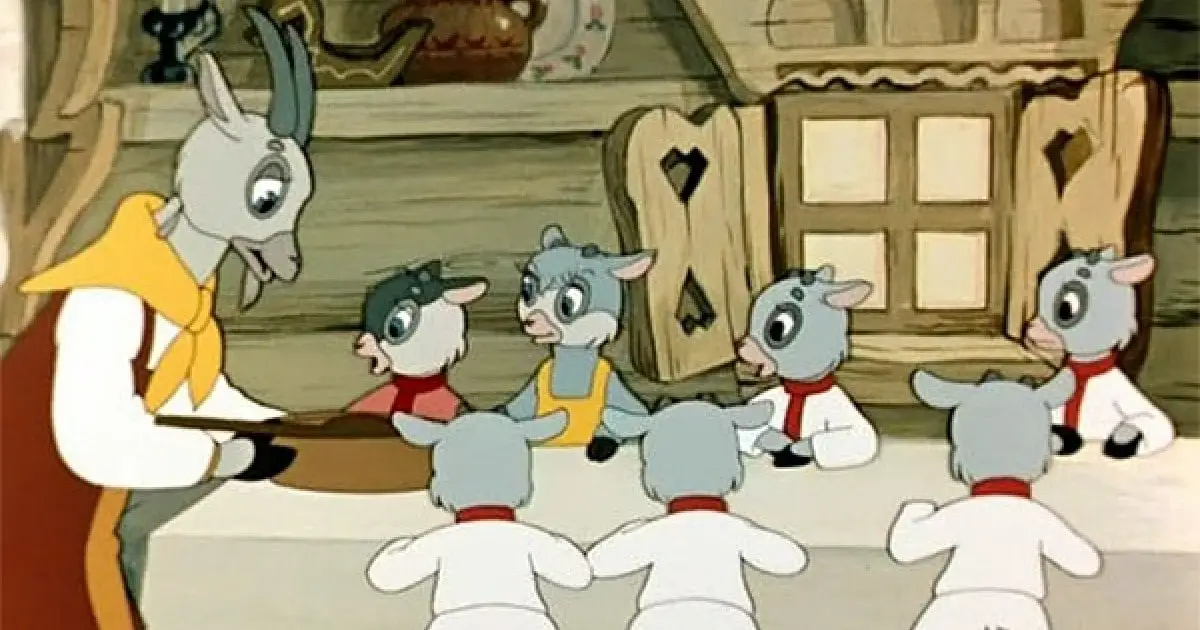
Classic Soviet Cartoons to Help You Learn Russian
For language learners, classic cartoons offer an engaging and accessible way to absorb vocabulary, pronunciation, and cultural context. When it comes to Russian, few resources are as rich and entertaining as the animated films produced by Soyuzmultfilm, which was the Soviet Union’s and is now Russia’s premier animation studio. Founded in 1936, Soyuzmultfilm has to […]
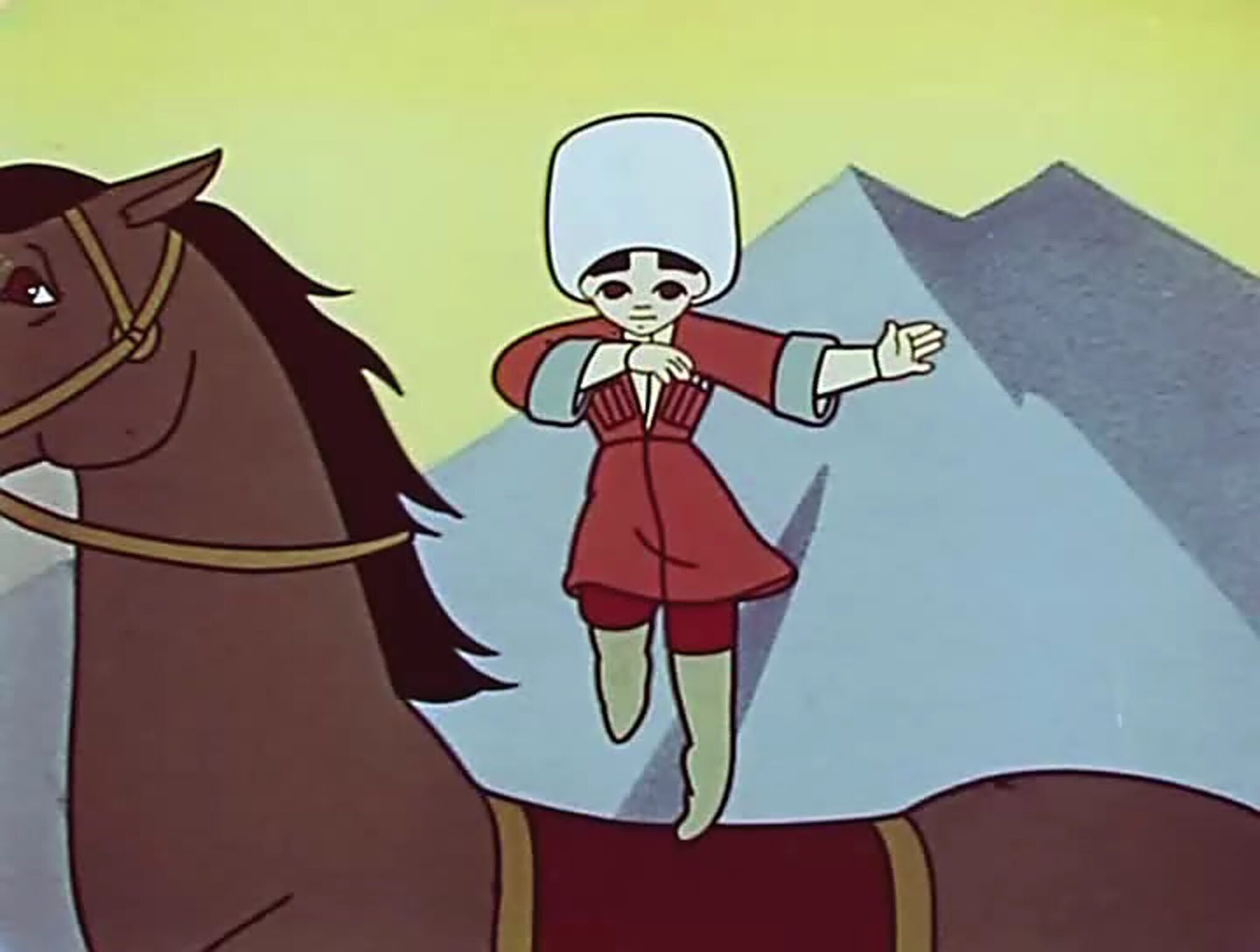
“Birthday:” A Dagestani Folk Tale and Soviet Cartoon (1959)
“Birthday” is a Soviet animated short film from 1959, based on a Dagestani folktale. The story follows a boy named Murat, who lives with his grandfather in a high mountain village. One day, Murat watches his grandfather record the birth of a lamb in the family book and is surprised to find that his own […]

Nu, Pogodi! An Enduring, Classic Soviet Slapstick Cartoon
Nu, Pogodi! (Ну, погоди!) is one of the most famous Soviet/Russian cartoons of all time. Its name translates roughly as “Just hold on! or “Just you wait!” Begun in 1969, it ran until 2006. Several generations of Russians were raised on the antics of its two main characters, which are often compared to Tom and […]
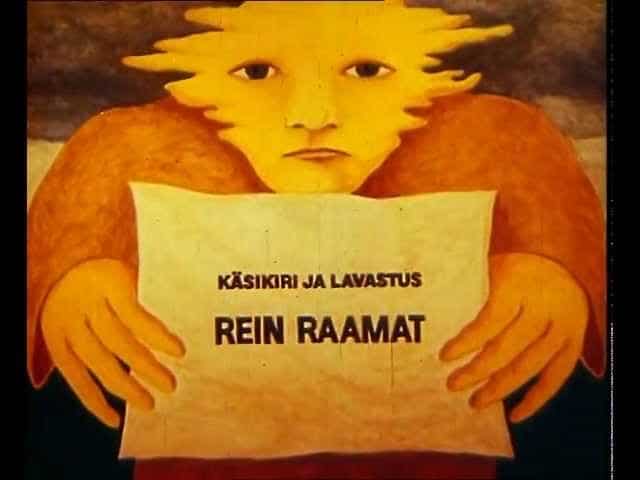
Tyll the Giant / Suur Tõll
Tyll the Giant (Suur Tõll) is an Estonian short animated film from the Soviet era, released in 1980. It was made by Rein Raamat, one of the earliest and most well-known Estonian directors of animated films. The film has nationalistic elements, and was frowned on by the Soviet authorities. It has more music than words, […]






